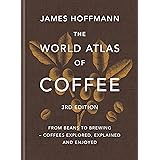Achieving an exceptional espresso shot, particularly for the discerning coffee enthusiast, transcends mere mechanics; it demands a meticulous approach and a profound understanding of every variable. The accompanying video expertly demonstrates the sophisticated techniques employed by dedicated “coffee nerds” to craft a truly outstanding espresso. This pursuit of the perfect espresso shot involves a precise calibration of input, environment, and extraction dynamics, elevating the entire process to an art form driven by scientific principles.
In the realm of expert espresso making, no detail is too small to consider. From the initial bean selection to the final extraction, each step significantly influences the ultimate flavor profile and sensory experience. This comprehensive guide will delve deeper into the advanced methodologies and nuanced considerations essential for pulling a truly unparalleled shot, expanding upon the critical insights presented in the video.
The Foundational Precision: Expert Espresso Bean Preparation
The journey to an excellent espresso shot commences long before the grinds meet the portafilter, specifically with the meticulous preparation of your coffee beans. The video highlights weighing exactly 18 grams, a critical starting point for establishing a repeatable and consistent brew ratio. This precise measurement is not arbitrary; it represents a carefully calibrated dose-to-yield ratio, fundamental for reproducible results and flavor extraction efficiency. Inconsistent dosing can lead to unpredictable extraction outcomes, making it impossible to diagnose or replicate optimal flavors.
Beyond simple weight, managing static electricity during grinding is a sophisticated yet often overlooked aspect of expert espresso preparation. Spritzing the beans with a small amount of water, often referred to as Ross Droplet Technique (RDT), effectively mitigates static build-up within the grinder. This technique prevents fine grinds from clumping together or clinging to the grinder components, ensuring a more uniform and consistent grind distribution into the portafilter. Imagine if your carefully weighed coffee dose lost valuable fines due to static retention; the consistency of your shot would be severely compromised, leading to potential under-extraction or channeling issues.
Grind Consistency and Thermal Stability: Cornerstones of Expert Espresso Extraction
Achieving the perfect grind size is arguably the most influential variable in expert espresso making, directly dictating the resistance to water flow and the rate of extraction. The video accurately points out that dialing in the grind often involves a trial-and-error process, making subtle adjustments to achieve the ideal flow rate for a specific coffee. An overly coarse grind leads to rapid extraction and a weak, sour shot, indicative of under-extraction and insufficient contact time. Conversely, an excessively fine grind causes channeling and over-extraction, resulting in bitter, astringent flavors and a choked machine.
Thermal stability is another paramount concern for the serious home barista, as demonstrated by the use of 205 degrees Fahrenheit water and preheating the portafilter. Maintaining a stable brew temperature throughout the entire extraction cycle is crucial for consistent flavor development. Water that is too hot can scorch the coffee, introducing bitter notes, while water that is too cool will lead to under-extraction and sourness. Preheating the portafilter prevents heat loss from the brew water as it contacts the metal, ensuring the entire system operates at the desired temperature and contributes to a stable thermal environment for the coffee puck.
Advanced Puck Preparation for Optimal Espresso Flow
Once the precisely ground coffee enters the preheated portafilter, the art of puck preparation begins, aiming for uniform density and resistance. The video showcases a magnetic funnel, which prevents spillage and helps to contain the fluffy coffee grounds, facilitating a cleaner workflow. This seemingly simple accessory is invaluable when working with precision doses and high-quality grinders that produce fine, delicate particles.
The use of a high-quality WDT (Weiss Distribution Technique) tool is a hallmark of expert espresso preparation, designed to eliminate clumps and evenly distribute the coffee grounds within the portafilter. Prior to tamping, gently stirring the coffee with fine needles breaks up any agglomerations, ensuring a homogeneous particle bed. Consider a scenario where an unevenly distributed puck contains hidden pockets of denser or looser grounds; water would inevitably seek the path of least resistance, leading to severe channeling and an uneven, unpleasant extraction. Following WDT, a well-calibrated tamper applies consistent and level pressure across the entire puck surface. This crucial step compresses the coffee grounds into a solid, uniform puck, creating the necessary resistance for proper extraction and preventing water from bypassing the coffee entirely.
Finally, the dispersion screen, or puck screen, is an increasingly popular tool among advanced baristas, mentioned in the video as a final touch before locking in the portafilter. Placed directly on top of the tamped puck, this metal mesh screen helps to distribute water more evenly across the coffee bed from the shower screen. It mitigates the impact of high-pressure water streams directly on the puck surface, preventing erosion and promoting a more laminar flow. This enhancement in water distribution significantly reduces the likelihood of channeling, thereby contributing to a more complete and uniform extraction of soluble coffee compounds.
Mastering Pressure Profiling for Dynamic Espresso Extraction
The most advanced aspect of expert espresso making demonstrated in the video is pressure profiling, moving beyond a simple on/off pump action to a nuanced control over the brew pressure. Starting with a pre-infusion at 3 bar for approximately 10 seconds allows the entire coffee puck to saturate gently and evenly before full pressure is applied. This controlled saturation phase helps to reduce channeling by allowing the coffee grounds to swell uniformly, preparing them for the main extraction phase.
Following pre-infusion, ramping the pressure up to 6 bar for the remainder of the extraction is a sophisticated technique designed to optimize the solubility of different compounds within the coffee. Varying the pressure allows for a more tailored extraction, potentially enhancing specific flavor notes and body characteristics. Imagine a scenario where a delicate light roast might benefit from a longer, lower-pressure pre-infusion to gently extract its complex aromatics, while a darker roast could handle a quicker pressure ramp. The specific pressure curve (e.g., 3 bar pre-infusion, then 6 bar for the main phase, as noted in the video) is often tailored to the specific coffee’s roast level, origin, and desired flavor profile, reflecting a deep understanding of espresso dynamics.
Concluding the extraction at 42 grams out in a total of 30 seconds, including pre-infusion time, defines the desired brew ratio and overall extraction duration. This specific yield-to-time parameter is a testament to the precision sought in expert espresso making, ensuring the ideal concentration and balance of flavors. The final taste assessment, confirming an “awesome” result, underscores the successful application of these advanced, data-driven techniques in creating a truly perfect espresso shot.
Grinding for Answers: Your Espresso Nerd Q&A
What is the first step to making good espresso?
The first step is to precisely measure your coffee beans, typically around 18 grams, which helps establish a consistent starting point for your brew.
What is ‘WDT’ and why is it used in espresso preparation?
WDT, or Weiss Distribution Technique, involves using a tool with fine needles to evenly distribute coffee grounds in the portafilter. This technique helps eliminate clumps and ensures uniform water flow during extraction.
Why is the coffee grind size important for making espresso?
The grind size is crucial because it directly controls how fast water flows through the coffee; an incorrect grind can lead to espresso that is too weak and sour or too bitter.
Why should I preheat my portafilter before making espresso?
Preheating the portafilter helps maintain a stable brew temperature by preventing the hot water from losing heat when it touches the cold metal, ensuring consistent flavor development.
What is ‘pre-infusion’ in espresso making?
Pre-infusion is a technique where water is applied to the coffee puck at a low pressure for a short period before full pressure is applied. This gently saturates the grounds and helps prevent uneven extraction or channeling.







